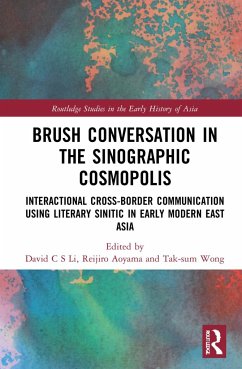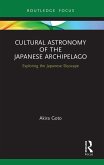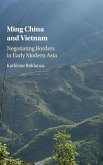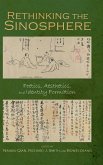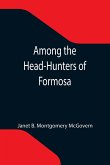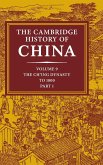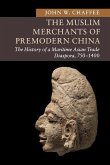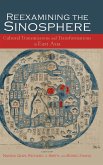For hundreds of years until the 1900s, in today's China, Japan, North and South Korea, and Vietnam, literati of Classical Chinese or Literary Sinitic (wényán ) could communicate in writing interactively, despite not speaking each other's languages.
This book outlines the historical background of, and the material conditions that led to, widespread literacy development in premodern and early modern East Asia, where reading and writing for formal purposes was conducted in Literary Sinitic. To exemplify how 'silent conversation' or 'brush-assisted conversation' is possible through writing-mediated brushed interaction, synchronously face-to-face, this book presents contextualized examples from recurrent contexts involving (i) boat drifters; (ii) traveling literati; and (iii) diplo- matic envoys. Where profound knowledge of classical canons and literary works in Sinitic was a shared attribute of the brush-talkers concerned, their brush-talk would characteristically be intertwined with poetic improvisation.
Being the first monograph in English to address this fascinating lingua-cultural practice and cross-border communication phenomenon, which was possibly sui generis in Sinographic East Asia, it will be of interest to students of not only East Asian languages and linguistics, history, international relations, and diplomacy, but also (historical) pragmatics, sociolinguistics, sociology of language, scripts and writing systems, and cultural and linguistic anthropology.
This book outlines the historical background of, and the material conditions that led to, widespread literacy development in premodern and early modern East Asia, where reading and writing for formal purposes was conducted in Literary Sinitic. To exemplify how 'silent conversation' or 'brush-assisted conversation' is possible through writing-mediated brushed interaction, synchronously face-to-face, this book presents contextualized examples from recurrent contexts involving (i) boat drifters; (ii) traveling literati; and (iii) diplo- matic envoys. Where profound knowledge of classical canons and literary works in Sinitic was a shared attribute of the brush-talkers concerned, their brush-talk would characteristically be intertwined with poetic improvisation.
Being the first monograph in English to address this fascinating lingua-cultural practice and cross-border communication phenomenon, which was possibly sui generis in Sinographic East Asia, it will be of interest to students of not only East Asian languages and linguistics, history, international relations, and diplomacy, but also (historical) pragmatics, sociolinguistics, sociology of language, scripts and writing systems, and cultural and linguistic anthropology.
"Grounded in the most recent research on language, writing, and literary culture in premodern sinographic East Asia, David C. S. Li et al.?s exciting new Brush Conversation in the Sinographic Cosmopolis breaks new ground in this heretofore neglected field of study at the intersection of Literary Sinitic, sinography, diplomatic history, and East Asian cultural and intellectual exchange. The first book-length collection in English on the topic, this volume mobilizes an impressive range of East Asian brush talk scholars and covers numerous pre- and early modern East Asian polities. The results force us to take seriously pre- and early modern East Asian ?synchronous writing-mediated cross-border face-to-face communication? and the multi-faceted written records that this unique cultural practice produced."---Prof. Ross King, University of British Columbia
"In this ground-breaking volume, scholars specializing in the languages and cultures of Japan, Korea, Vietnam, China, and the Ryukyus (Okinawa) plumb the historical record to reveal and analyze the fascinating array of written "brush talk" conversations that survive in the historical record. These conversations provide insights into the worlds of diplomacy, travel, espionage, and war, bringing to life a now-vanished cross-national culture with a shared foundation in Classical Chinese language and texts. The different book chapters, despite their separate authorship, are unified by a sophisticated theoretical framework. Combining scholarly rigor with dramatic storytelling, this book is the only scholarly investigation of brush talk that looks at the phenomenon with such a wide lens. As part of the current interest in the "Sinographic Cosmopolis" prior to the 20th century, this book is sure to be of interest to scholars of East Asian history, culture, language, and texts."---Prof. Zev Handel, Department of Asian Languages & Literature, University of Washington
"Everybody working on East Asia knows what brush talk is, the use of Sinitic (literary Chinese) to conduct a silent conversation, and everybody knows how useful it was (and still can be) for communication between speakers of different languages, such as Chinese, Japanese, Korean and Vietnamese. But that is the limit of what everybody knows, for brush talk has been extraordinarily neglected by historians, in spite of the fact that plenty of records of these written conversations survive today. This enthralling collection of essays redresses the balance by focusing on the phenomenon of brush talk in all its extraordinary variety. Koreans, Japanese and Ryukyuans shipwrecked on the Chinese coast had no alternative but to resort to brush talk to explain who they were and to find out where they had landed, so long as at least one member of the crew had some command of Sinitic. Vietnamese diplomats, like most diplomats in premodern East Asia, had little or no knowledge of any form of spoken Chinese and were forced to rely on interpreters, but for social interactions as well as for more intellectual exchanges they turned to brush talk. The essays in this pathbreaking book explore the uses of brush talk in different contexts and between speakers of various languages, they consider the value of the written records of brush conversations that survive and they weigh up the implications for attitudes towards spoken languages in premodern East Asia. This is a stimulating and fascinating book, and one that rightly draws attention to a crucially important means of communication between peoples in East Asia".--- Prof. Peter Kornicki, University of Cambridge
"In this ground-breaking volume, scholars specializing in the languages and cultures of Japan, Korea, Vietnam, China, and the Ryukyus (Okinawa) plumb the historical record to reveal and analyze the fascinating array of written "brush talk" conversations that survive in the historical record. These conversations provide insights into the worlds of diplomacy, travel, espionage, and war, bringing to life a now-vanished cross-national culture with a shared foundation in Classical Chinese language and texts. The different book chapters, despite their separate authorship, are unified by a sophisticated theoretical framework. Combining scholarly rigor with dramatic storytelling, this book is the only scholarly investigation of brush talk that looks at the phenomenon with such a wide lens. As part of the current interest in the "Sinographic Cosmopolis" prior to the 20th century, this book is sure to be of interest to scholars of East Asian history, culture, language, and texts."---Prof. Zev Handel, Department of Asian Languages & Literature, University of Washington
"Everybody working on East Asia knows what brush talk is, the use of Sinitic (literary Chinese) to conduct a silent conversation, and everybody knows how useful it was (and still can be) for communication between speakers of different languages, such as Chinese, Japanese, Korean and Vietnamese. But that is the limit of what everybody knows, for brush talk has been extraordinarily neglected by historians, in spite of the fact that plenty of records of these written conversations survive today. This enthralling collection of essays redresses the balance by focusing on the phenomenon of brush talk in all its extraordinary variety. Koreans, Japanese and Ryukyuans shipwrecked on the Chinese coast had no alternative but to resort to brush talk to explain who they were and to find out where they had landed, so long as at least one member of the crew had some command of Sinitic. Vietnamese diplomats, like most diplomats in premodern East Asia, had little or no knowledge of any form of spoken Chinese and were forced to rely on interpreters, but for social interactions as well as for more intellectual exchanges they turned to brush talk. The essays in this pathbreaking book explore the uses of brush talk in different contexts and between speakers of various languages, they consider the value of the written records of brush conversations that survive and they weigh up the implications for attitudes towards spoken languages in premodern East Asia. This is a stimulating and fascinating book, and one that rightly draws attention to a crucially important means of communication between peoples in East Asia".--- Prof. Peter Kornicki, University of Cambridge

